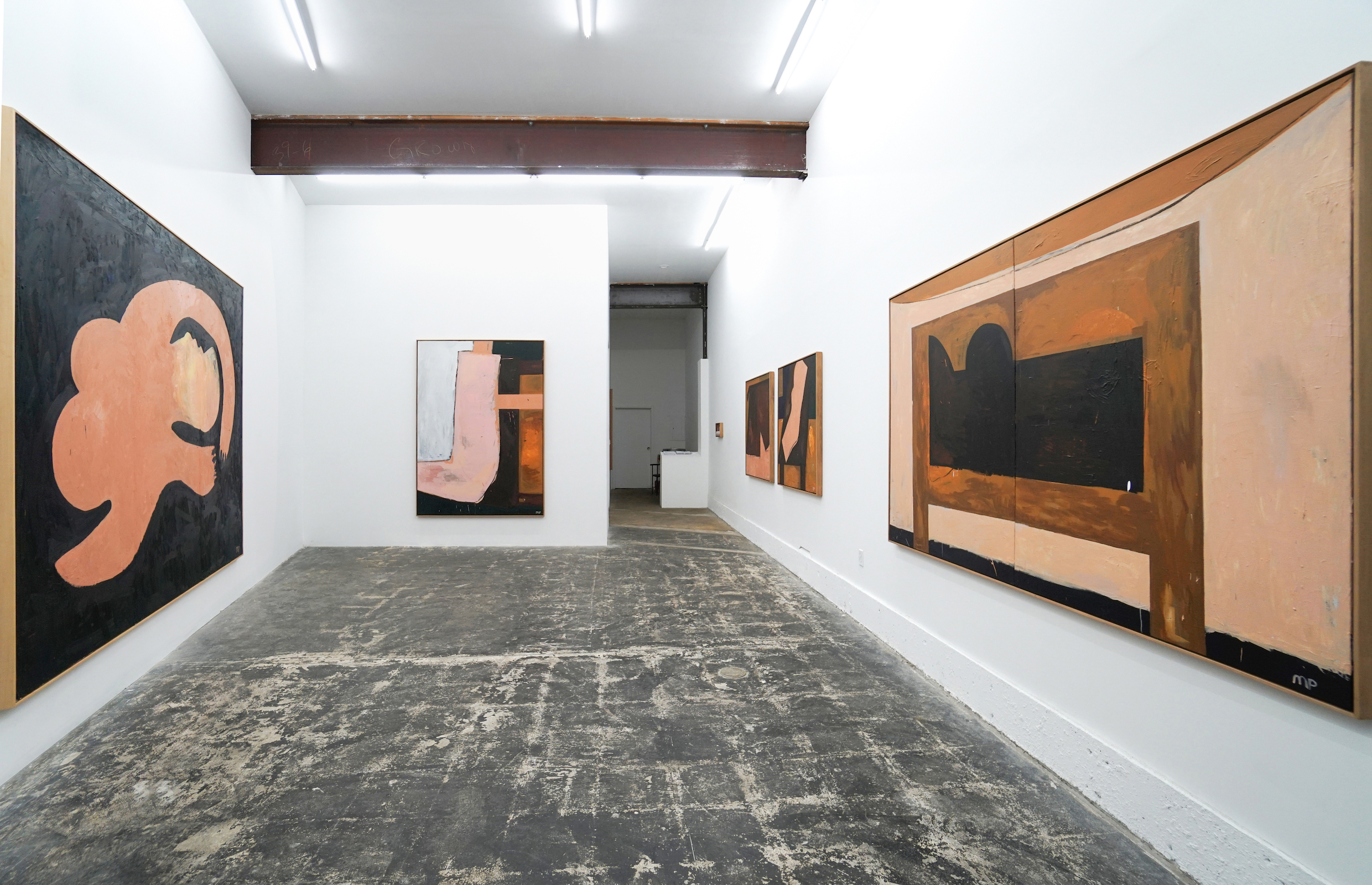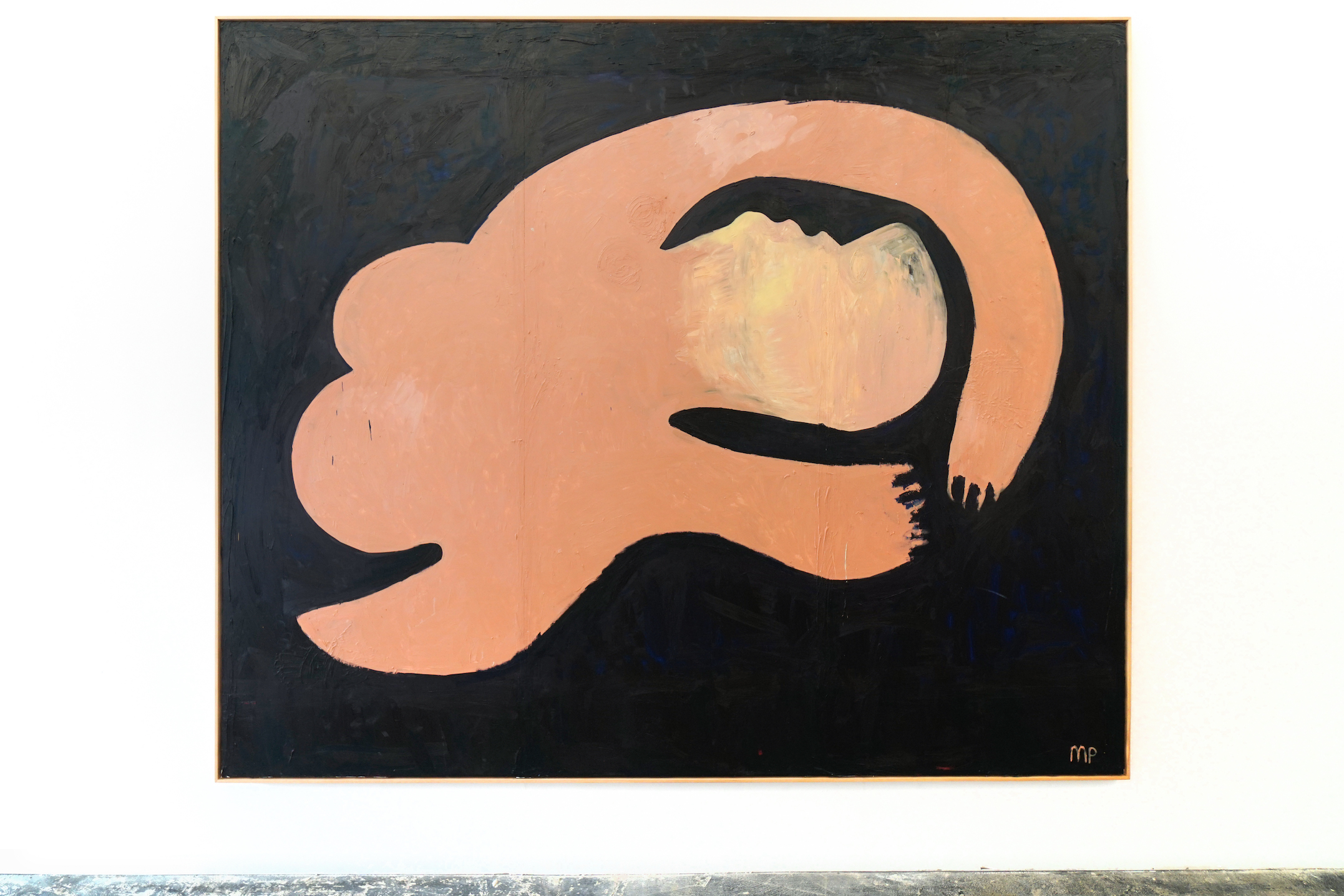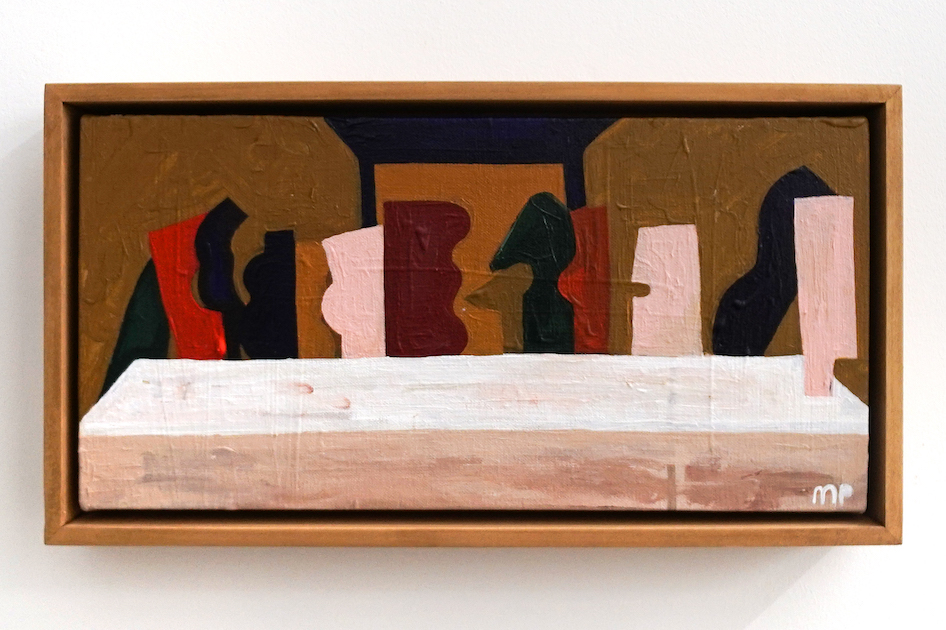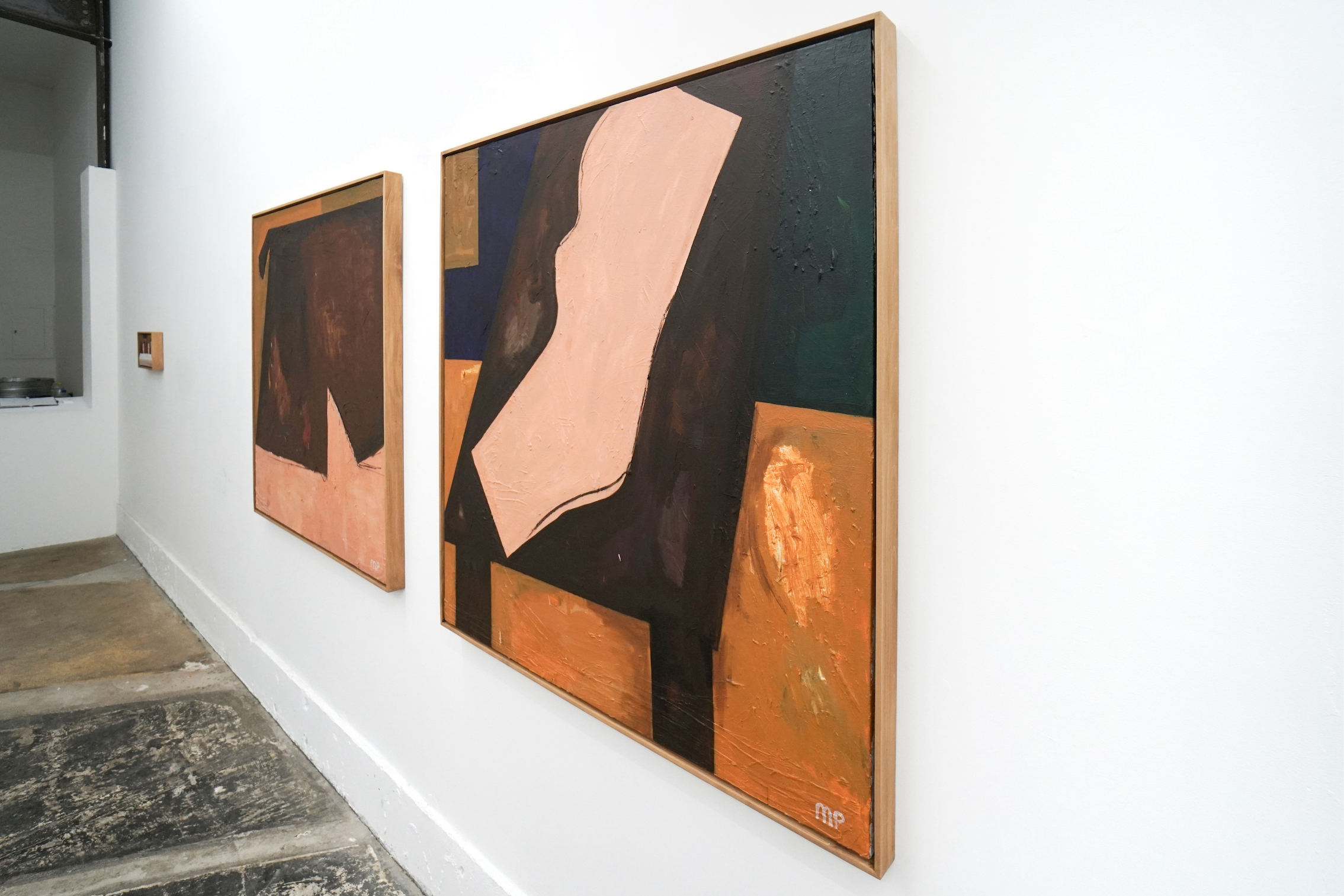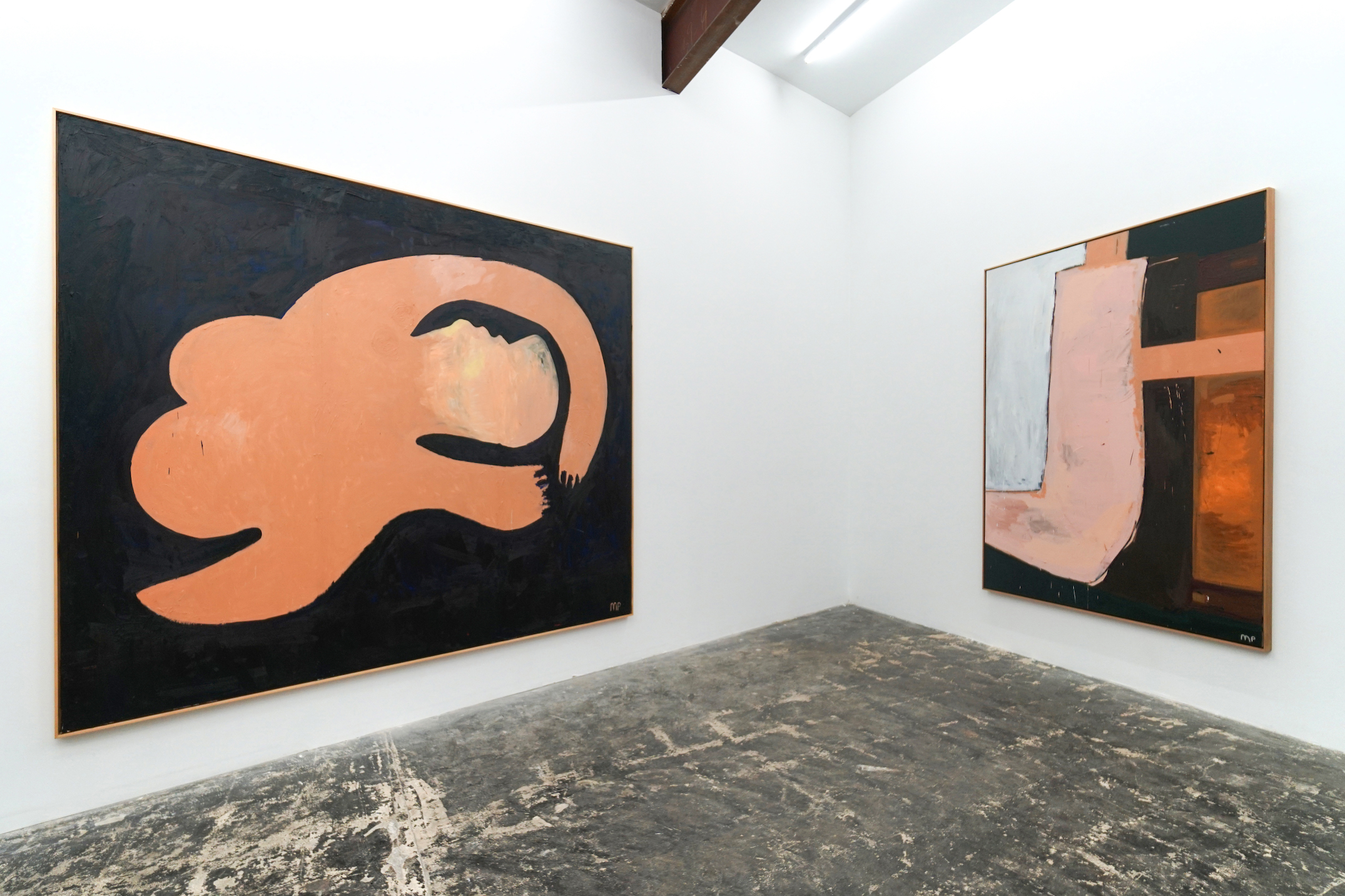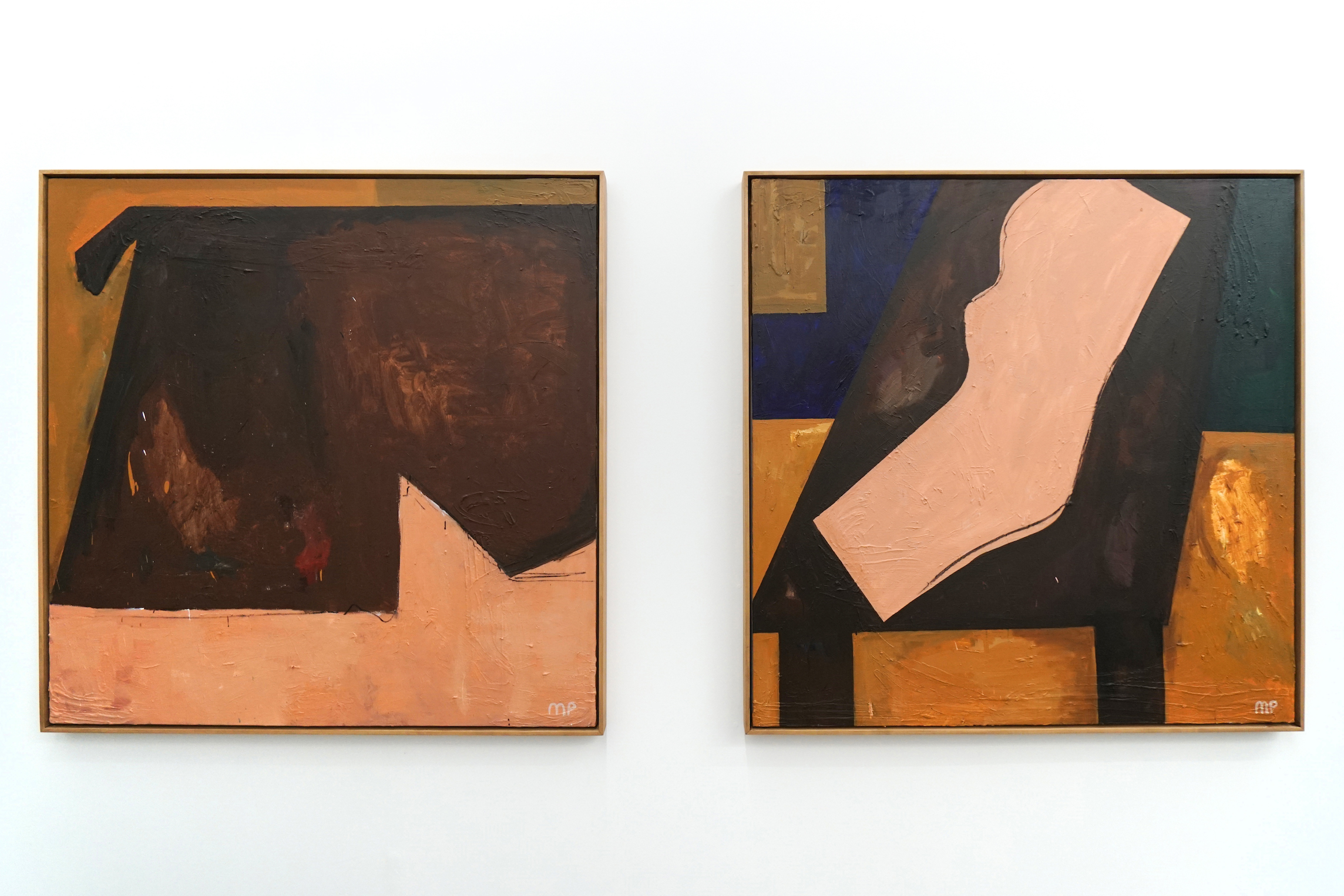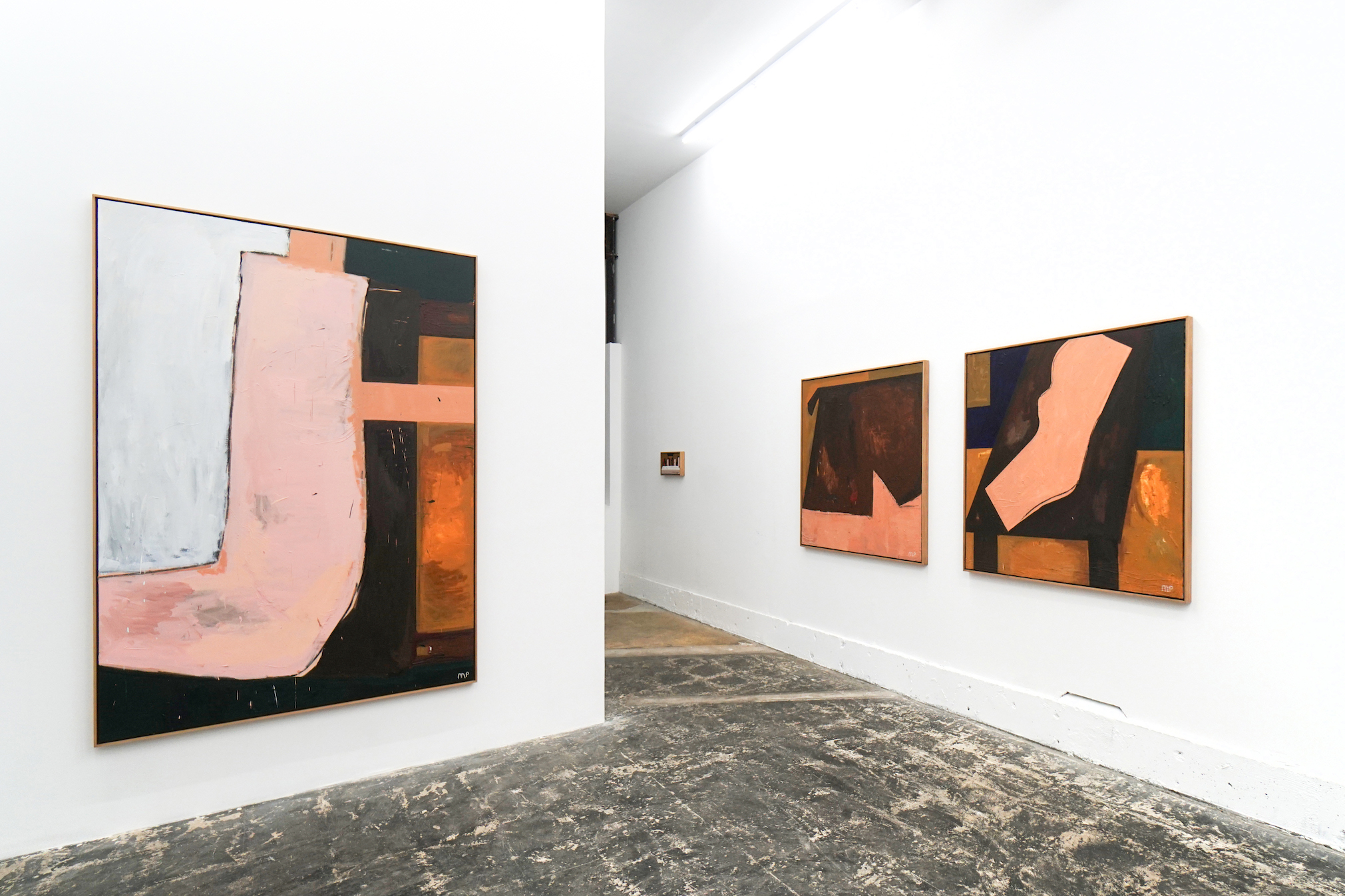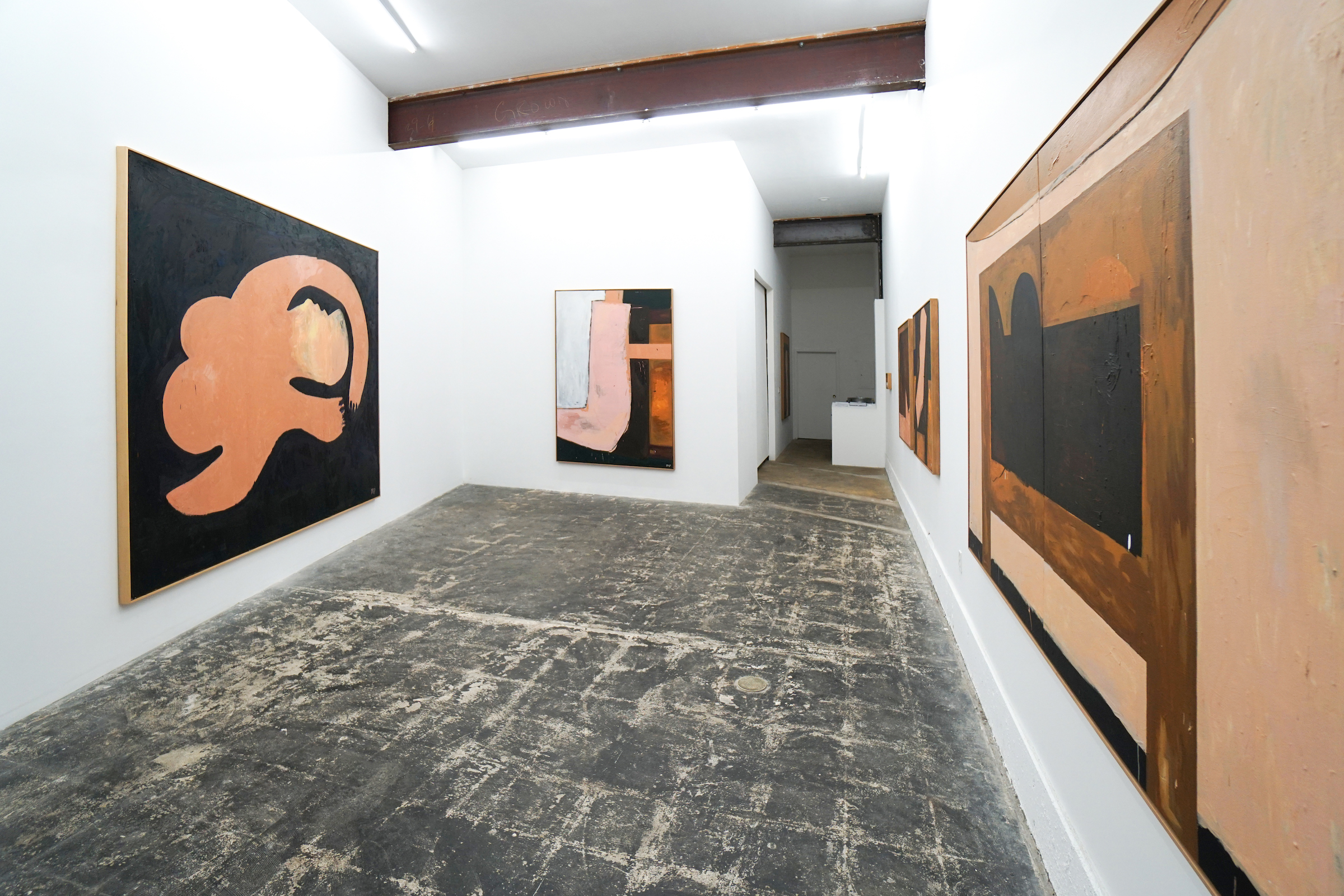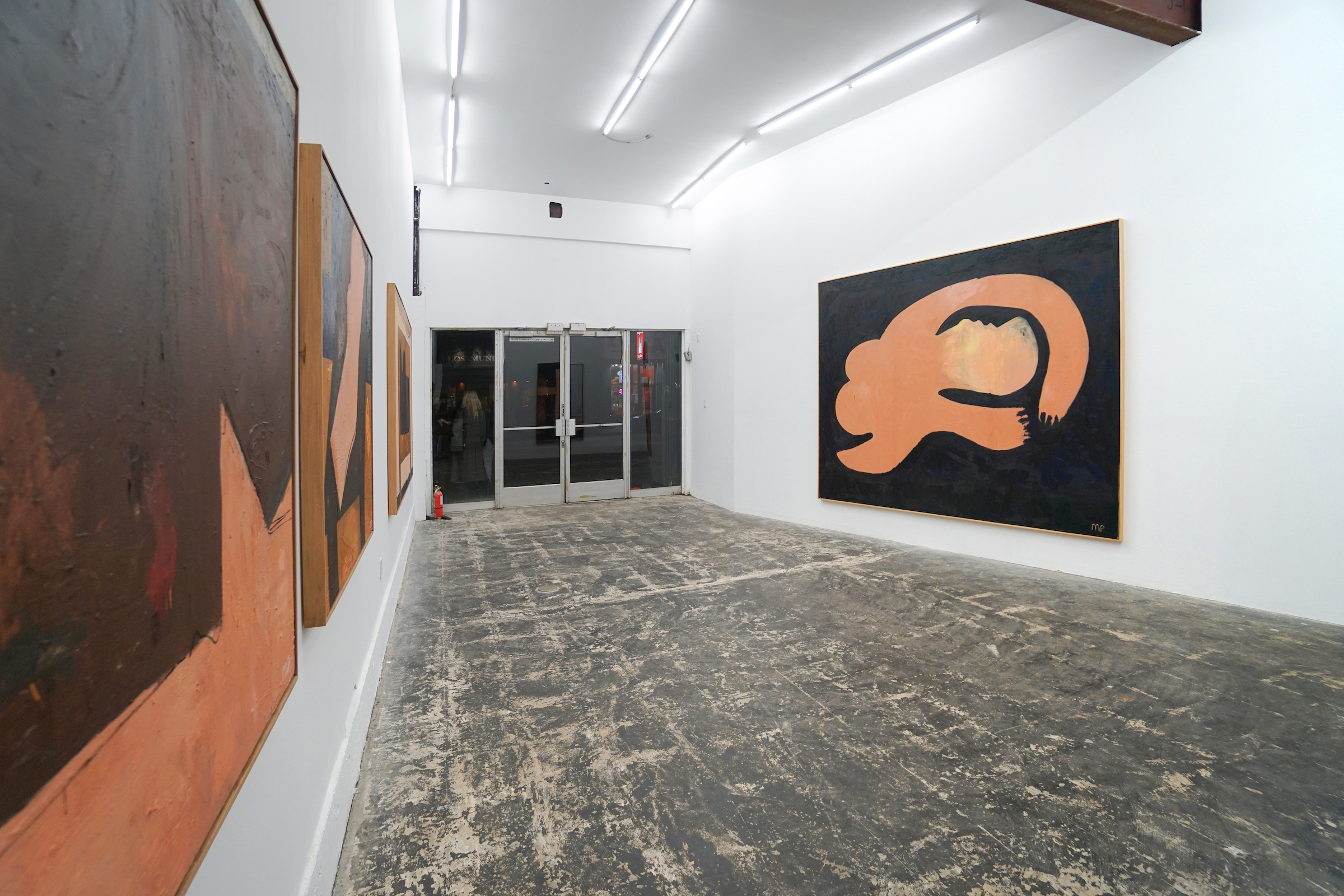The Last Supper
Mattea Perrotta @ Et al. etc.
Review by Emma Drew
In French, the word hôte means both guest and host—it’s a textbook example of a word with multiple meanings of which one is the reverse of another, or an auto-antonym, also called a Janus word. Mattea Perrotta’s suite of seven paintings in The Last Supper, on view at Et al. etc. from March 1 to April 6, carries a similar, superficial appearance of illogic. Big (between 48” x 48” and 91” x 108” with one, miniature exception), blocky, and abstract, they are nonetheless straightforward, intimate, and grounded. Rectangular shapes and planes stack in combination with more organic forms and body-like contours, in pinks, browns, and blues, dusty, earthy, and deep. Done in acrylic with oil stick or charcoal, they look assembled and innate.
The paintings, too, are couched in a context of hospitality and reciprocity: each corresponds to a dinner attended by Perrotta, a frequent traveler, from Istanbul to Paris, Lisbon to Marrakech. Many paintings are of tables—from above, from the side, and maybe from another angle, too—or the idea of a table, a particular one. In Cena Napoli (all works 2018 or 2019), an overhead view of a chestnut-colored slab extends beyond the bottom edge of the canvas, as does the peachy, curving shape atop it, like a table runner looking like a naked torso in profile; table legs splay out at the top, the wrong way from our viewpoint, both angling down and out, like kickstands.
Across the works, the richness and brilliance of Perrotta’s palette and the expressive application of paint—built-up, worked over, teeming with light and color—upon close inspection become subtly prismatic, multifaceted. The insistence on and immediacy of non-linear perspective in the series creates an experience of simultaneity, evocative of the encompassing, shifting nature of exchange, the core dynamic of joining with others in communion, in conversation, at a meal. In an accompanying text, Lara Schoorl keenly observes that around a table, people are “connected while kept at a distance.” The same thing happens around Perrotta’s tableaux, as we seek out a place to join.
[Editor’s note: Et al. etc. is Journal’s editor’s gallery — Journal would never solicit reviews of Et al. shows. This review was written for another publication but missed a publishing date; we are glad to host it here]

